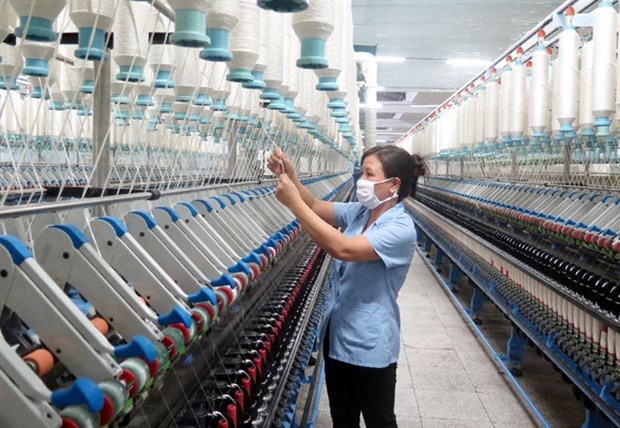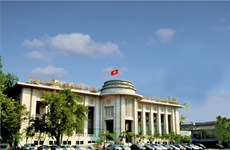SoEs struggle to attract investors in equitisation
The Central Institute for Economic Management released a report on October 30 on the actuality of strategic shareholders’ involvement in SoEs equitisation process.
 Production at the Nam Đinh Textile Garment Jsc.’s factory in Nam Đinh City. (Photo: VNA)
Production at the Nam Đinh Textile Garment Jsc.’s factory in Nam Đinh City. (Photo: VNA)Hanoi (VNA) - The Central Institute for Economic Management (CIEM) released a report on October 30 on the actuality of strategic shareholders’ involvement in State-owned enterprises’ (SoEs) equitisation process, which they concluded to be below expectations.
The CIEM reported that since 1992, Vietnam has equitised over 4,500 enterprises, though the process has yet to meet the economy’s growth rate, with some targets missed, including subpar sales of shares to investors.
The number of strategic investors participating in SOEs’ equitisation has been lower than expected, and attracting strategic shareholders is crucial in accelerating SOEs’ restructuring process, said Pham Duc Trung, head of CIEM’s Corporate Development and Reform Department.
Trung also commented that the National Assembly set 2017’s goal for SoE equitisation and divestment at the 60 trillion VND (2.67 million USD) mark.
In the first nine months of 2017, estimated total equitised and divested value was about 12 trillion VND (534,000 USD), with roughly half coming from equitisation.
In summation, most State level corporations and State-owned enterprises have not been successful in attracting strategic shareholders.
As reported by the CIEM and the State Securities Commission, results from SoEs’ sale of shares have not achieved the estimated goal of reducing the level of state budget in SoEs’ charter capital and attracting private investment instead.
The State still holds 81 percent of total shares across SoEs, leaving the level of private investors’ involvement at only 9.5 percent, as compared to the desired 16.7 percent, with strategic investors’ participation at an even lower level of 7.3 percent, not even half the designated level of 15.8 percent.
Reports from 46 corporations’ approved equitisation process for the period from 2011 to 2016 shows that total charter capital of these 46 corporations reached 171.2 trillion VND (7.6 billion USD), of which the total charter capital held by the State accounted for 73 percent, while strategic shareholders only held 16.57 percent of total charter capital.
Furthermore, the percentage of SoE’s shares sold to foreign investors was just 8.7 percent across these 46 enterprises.
According to Trung, there are five reasons why strategic shareholders are not interested in the equitisation of Vietnamese SoEs, causing difficulties for SoEs to find strategic shareholders and slowing down the equitisation process.
The biggest obstacle named by the CIEM is the State’s tight control over the ownership ratio of foreign strategic shareholders, thus reducing investment incentives for shareholders as they do not guarantee the right to these corporations’ business management.
Other reasons include unreasonable evaluation of enterprises and prices of their stocks, lack of attractiveness towards strategic shareholders, lack of openness, transparency of information, and a complex, rigid selling method.
According to Adam Sitkoff, Managing Director of the American Chamber of Commerce (Amcham) in Hanoi, foreign investors want to participate in equitisation in Vietnam but have been deterred by unresolved issues in the matters listed above.
Nguyen Dinh Cung, Director of CIEM, said that for SoEs to attract strategic shareholders, it is necessary to change their thinking towards the perspective of investors instead of administrative authority.-VNA













